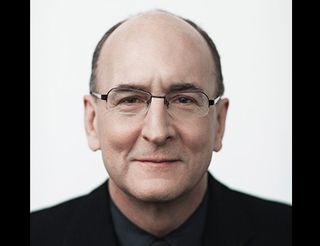Met Opera Tests Digital Pipes For Art Form That’s Already OTT

At first blush, “OTT” and “opera” seem an odd fit in the same sentence, an updated version of “Kill the Wabbit,” that waggish old Bugs Bunny riff on Wagner. But Peter Gelb, general manager of the Metropolitan Opera and a media-savvy former Sony Classical music executive, has embraced the multiplatform potential of the centuries-old art form. During his 10-year tenure, he has made several moves to open up access to Lincoln Center, most impressively with a blockbuster series of live HD transmissions of stage performances. After their theatrical runs, the shows are edited slightly, laced with backstage bonus material and then repackaged for linear TV channels worldwide as well as digitally through a growing suite of Met On Demand apps. Like many an OTT purveyor, Gelb wouldn’t disclose too many hard numbers but he had a wide-ranging conversation with B&C editor Dade Hayes about the Met’s strategy for reaching Puccini lovers through connected devices. The following are edited excerpts.
What is your goal in exploring on-demand platforms?
We’re trying to take advantage of every opportunity we can. Certainly, using modern digital delivery systems is one way of getting to our audience, which, in the case of the Met, is a global audience. With our [theatrical] HD transmissions, we’re feeding live programs with subtitles in 8 different languages with multiple satellites to an audience of hundreds of thousands of people.…We’re expanding all the time.
You recently added distribution on Roku. Where else is the Met available digitally?
We have a Samsung smart TV app that was launched last fall after Roku in July. Our iPad app was first launched in spring of 2012 and then we launched a more sophisticated version of it in summer 2014 with full AirPlay support so you can watch it on Apple TV. An Android app launched in September for phones and tablets, with Google ChromeCast support.
Are you in active discussions with other partners? Can we expect more announcements soon?
There’s nothing really I can say at the moment. We’re certainly looking at other opportunities. It seems to be gathering more steam in terms of subs. The more platforms where we make it available, the more compelling it is for subscribers. The people who subscribe to this, it’s an opera-niche audience.
Broadcasting & Cable Newsletter
The smarter way to stay on top of broadcasting and cable industry. Sign up below
How many countries is the commercial on-demand service available in?
It’s not geo-restricted in any way. Many of the same audiences who watch in theatres are also watching on-demand. The HD transmissions are in Moscow, Jerusalem, Cairo, Beirut, Lebanon. We’re in the Arctic Circle in Tromso, Norway. Uruguay, Argentina. A huge geographic swath.
What is the pricing for Met on Demand?
It’s $14.99 a month, $149.99 a year or $4.99 to rent a single opera. We have a lot of yearly subscribers.
What activity have you seen in transactional sales vs. subscriptions?
The vast majority of our sales are subscriptions, which is interesting because it sort of goes against the direction of things in live theatre. Opera companies like the Met have seen the change of people buying tickets to individual live performances. It’s moving gradually away from a subscription model and toward a single-ticket model. We don’t want to lose our subscribers, certainly. But people today, in terms of their consumption of live theatre, are more interested in waiting than committing themselves months in advance. But the real phenomenal success the Met has had has been with these live HD transmissions. In terms of attendance for our 10 shows a year, we’re the No. 1 alternative content provider for cinemas.
In terms of programming, is streaming going to help open up opera to new creative voices as it has in other cultural arenas?
There’s no question. We have a commitment to presenting work that has not been seen at the Met before. When we do our programming, typically a season of the Met consists of about 24 or 25 operas that are performed between September and May. What we do is we choose a microcosm of a season and select 10 of those, for our HD transmissions. Of those titles, we include popular ones and more esoteric ones. Even for a new work, though, it’s not unusual for us to sell 150,000 to 160,000 tickets.
Is the digital on-demand service likely to remain a supplement to the larger revenue streams for the near future, or could it eventually be the tail wagging the dog?
At the moment, it’s the icing on the cake.
Pick your metaphor.
We don’t have enough of a digital on-demand audience yet to justify the production of the content. The engine that drives our audio-visual production is the live HD distribution in movie theatres, where we get 50% of the box office.
Do you see digitally enabled interactivity between artists and the audience becoming a factor, as in the TV world?
We have not reached that point.
What about in the future?
I’m not sure how we would do that. Opera is the most instantaneous art form in terms of the immediacy of the moment. It’s about singers singing unamplified on the stage and meeting with the audience’s approval or not. It has a very gladiatorial aspect to it. The interaction with the audience is a critical part of the art form, but there’s not an additional interactive element we can add.
Is it difficult to consider those kinds of changes given the deep-rooted traditions at the Met?
Opera is an ancient art form but we’re trying to react and also to lead. With our live transmissions, we were the first. We’re open to any idea that makes sense but that feels organic. We’ve looked at virtual reality in the opera house, for example. I’m not quite sure what the application would be yet. But we have our eyes and ears open.
